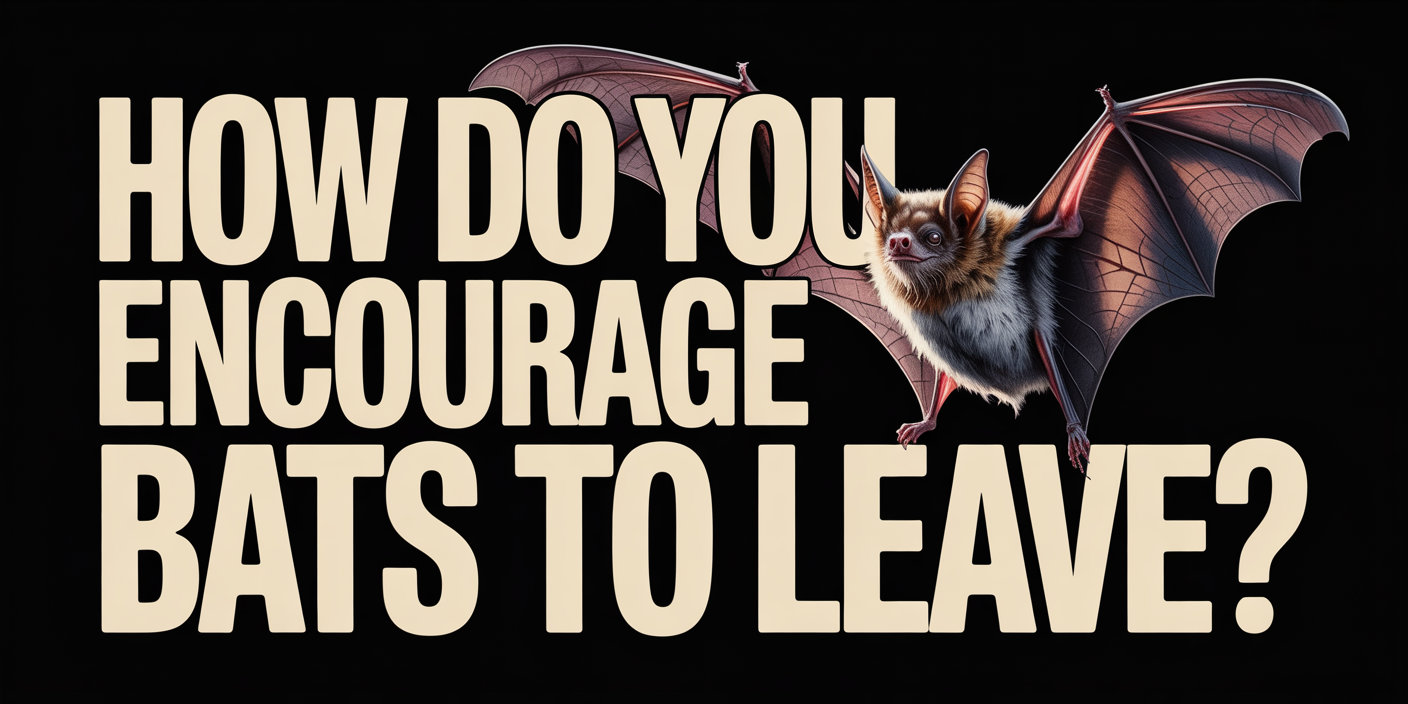“The best way to make bats leave is with a one-way exclusion device that lets them out but prevents re-entry. Using light, sound, and proper timing helps guide them out safely.”
If you’ve started hearing faint scratching in your attic or noticed small droppings near your roofline, there’s a good chance you’ve got uninvited guests, bats. While they play a vital role in controlling insects like mosquitoes, having a bat colony inside your home is a whole different story.
In Treasure Coast, FL, where warm temperatures and cozy attic spaces are ideal for roosting, bat intrusions aren’t uncommon. What seems like a minor annoyance can quickly escalate into health hazards, structural damage, and legal complications if not handled properly.
Luckily, you don’t have to resort to harmful traps or chaotic DIY fixes. There are proven, humane methods to encourage bats to leave your property safely and legally, without harming them or risking fines.
From timed exclusions to strategic lighting, the process is all about knowing what works and when. In this guide, we’ll walk you through the most effective ways to remove bats peacefully and permanently, with tips straight from the professionals at AAAC Wildlife Removal of Treasure Coast.
Learn more: What do bats hate the most?

1. Use a One-Way Exclusion Device (Gently Show Them Out)
The most effective way to get rid of bats is by installing a one-way exclusion device. These are special tubes, netting systems, or flaps fitted over the bats’ primary exit points. They let the bats leave as usual but prevent them from getting back in. It’s a smart, humane method that encourages relocation without panic, and it’s a core technique in professional bat exclusion.
This approach is most successful when all entry points around your home have been accurately identified. Since bats can slip through tiny gaps, finding every active opening is critical. That’s why experienced pest control teams like AAAC Wildlife Removal of Treasure Coast begin every job with a detailed inspection before any exclusion begins.
Once installed, one-way devices need to stay in place for several days, giving every bat time to exit. When the colony is fully out, the final sealing process begins. This careful sequence ensures long-term success and keeps your home safe, legal, and free of unwanted winged visitors.
2. Time It Right: Respect the Maternity Season
Before you install any exclusion devices, timing is everything, especially in Florida. From April 15 to August 15, it’s illegal to evict bats because it’s their maternity season. During this time, baby bats (called pups) can’t fly. If you force adult bats out too early, you could end up with orphaned pups stuck inside your walls, which is both inhumane and a serious biohazard.
For Treasure Coast homeowners, the best time to take action is late summer to early spring, when bat colonies are more mobile and independent. That’s when you’ll get the best results from exclusion efforts without harming the colony or violating state laws. Planning ahead helps avoid delays, especially if you want the problem resolved before the next maternity season.
Not sure if it’s safe to proceed? This is where AAAC Wildlife Removal of Treasure Coast comes in. Their licensed techs understand Florida wildlife regulations and will inspect your situation to ensure it’s legal, and effective, to move forward. They’ll help you plan a removal strategy that works for both your home and the bats.
3. Light Up the Area: Make Your Attic Less Inviting
Bats are nocturnal and thrive in dark, quiet environments. If they’ve picked your attic or shed to roost, it’s likely because it offers the perfect mix of darkness and seclusion. By adding bright lights to the space, you disrupt that cozy setup and encourage them to move elsewhere, without ever laying a finger on them.
Using floodlights, utility lamps, or even string lights in the attic can create enough constant disturbance to make bats uncomfortable. Just make sure the lights are safely installed and left on for several days or nights in a row. Avoid shining lights directly into insulation or flammable materials, and never attempt this if you suspect there are baby bats present.
This isn’t a standalone solution, but when paired with exclusion devices and proper timing, lighting can give bats the nudge they need to leave. For homeowners in the Treasure Coast, this is a smart add-on that AAAC Wildlife Removal often recommends as part of a larger bat eviction strategy. It’s simple, cost-effective, and surprisingly persuasive for these winged squatters.
4. Add Noise and Disturbance: Break the Quiet
Just like they love the dark, bats prefer peace and quiet. So when their cozy habitat suddenly turns into a noisy, unpredictable space, they’re more likely to pack up and leave. Creating low-level disturbances is a safe, humane way to encourage even a large colony of bats to relocate, without causing harm or panic.
You can use a radio, fan, or even an ultrasonic noise machine to create continuous sound. Place the device near their roosting spot (without blocking exits), and let it run during the day while they’re trying to rest. This disruption makes your attic feel like a poor choice for long-term shelter, and many bats will naturally seek a quieter space, like a tree hollow or even a bat house placed further from your home.
While this won’t remove the bats overnight, it works well when paired with exclusion and lighting strategies. If your goal is to keep bats away for good, it’s important to use this method correctly. The team at AAAC Wildlife Removal of Treasure Coast knows how to guide bats out gently and prevent repeat visits, even when you’re dealing with many bats.
5. Seal Entry Points (After They’re Gone!)
Once the bats have flown the coop, sealing up their entry points is crucial to keep them from coming back. This step should only be done after you’re sure the entire colony is gone, otherwise, you risk trapping bats inside your home, which can lead to dead animals, foul odors, and even legal trouble under Florida wildlife laws.
Start by identifying every small crack, hole, or gap around your roofline, vents, soffits, and siding. Bats can slip through openings as small as a dime, so don’t underestimate what they can access. Use caulk, mesh, or weather-resistant sealants to close the gaps. Attic vents and chimneys should be screened off with durable materials.
This is where AAAC Wildlife Removal of Treasure Coast really shines. Their team not only handles the exclusion process but also performs a full home seal-up to prevent re-entry. With expert tools and trained eyes, they make sure your home stays bat-free for good, without missing a single entry point.
Pro Tip: Why DIY Doesn’t Always Work
It might seem tempting to try handling a bat infestation yourself, especially if you’ve spotted where they’re getting in. But without the right timing, tools, or understanding of protected bat species and Florida wildlife laws, DIY methods can do more harm than good. Many homeowners accidentally allow bats to get trapped inside, or seal up exits too soon, leading to bigger messes and even legal trouble.
There’s also the health risk. When you come into contact with bat guano or a frightened animal, you increase your chances of exposure to diseases like histoplasmosis, or worse, rabies. Climbing into cramped attic spaces adds physical danger on top of that. If you need to remove bats safely and legally, it’s best to call in a licensed expert.
AAAC Wildlife Removal of Treasure Coast specializes in humane, state-approved solutions that protect your home and your health. From identifying the species to sealing the last entry point, they handle everything so you don’t have to take the risk.
How Do You Encouraging Bats Out the Right Way
Getting bats to leave your home doesn’t have to be a nightmare, you just need the right strategy and a little patience. With humane methods like one-way exclusion, strategic timing, added light and noise, and sealing up your home once they’re gone, you can safely guide bats out without harming them or breaking the law.
If you’re in Treasure Coast and unsure where to start, don’t go it alone. The licensed experts at AAAC Wildlife Removal of Treasure Coast are ready to help with a full inspection, removal plan, and prevention strategy that fits your home and timeline. Peace of mind is just one call away.
Your Bat-Free Home Starts Here!
Still hearing squeaks in the attic or spotting signs of guano? Don’t wait for bats in your home to become a serious hazard. AAAC Wildlife Removal of Treasure Coast offers expert bat removal services that are safe, legal, and effective, designed specifically for Florida properties that need both protection and peace of mind.
From exclusion devices to sealing entry points, our licensed team handles everything without the need for harmful traps or unreliable store-bought repellent. We take a humane approach that respects bat conservation laws while making sure they don’t come back.
👉 Schedule Your Bat Inspection Today! Let’s get your home back to normal.




